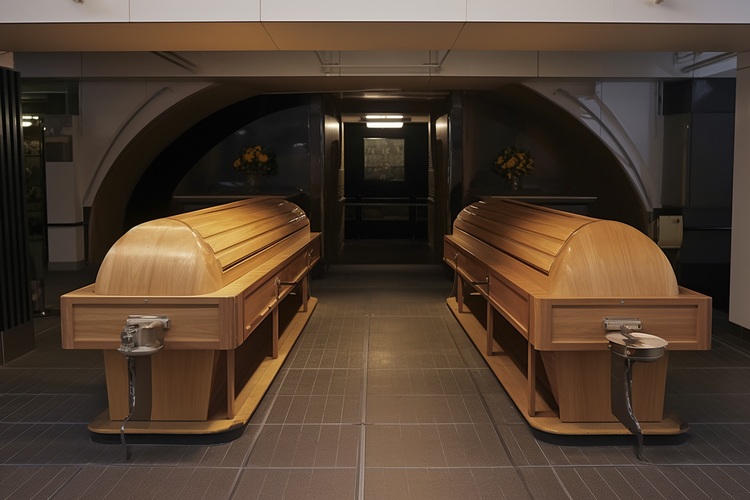THE TRUTH ABOUT CREMATION IN 2025: PROCESS AND COSTS
Cremation has become an increasingly chosen option in 2025, but many still don’t fully understand how the process works or what’s actually involved. From preparation to final memorial choices, today’s cremation services offer more flexibility than ever. Here’s what families need to know before making this important decision.

How is the cremation process explained step by step in 2025?
The cremation process in 2025 remains largely similar to previous years, with some advancements in technology and efficiency. Here’s a step-by-step breakdown:
-
Documentation: The necessary paperwork, including death certificates and cremation authorization forms, is completed.
-
Identification: The deceased is positively identified, and all personal items are removed and returned to the family.
-
Preparation: The body is prepared for cremation, which may include removing medical devices and placing the deceased in a cremation container.
-
Cremation: The body is placed in the cremation chamber, where it is subjected to high temperatures (1400-1800°F) for 2-3 hours.
-
Cooling and processing: The remains are allowed to cool before being processed into a fine, sand-like consistency.
-
Transfer: The cremated remains are placed in a temporary container or the urn selected by the family.
What are the modern cremation options and urn selection choices?
As we move towards 2025, cremation options have expanded to accommodate diverse preferences and environmental concerns:
-
Traditional cremation: The standard process using high-temperature cremation chambers.
-
Alkaline hydrolysis (water cremation): An eco-friendly option using water and alkaline chemicals to break down the body.
-
Natural organic reduction: A process that turns the body into soil, gaining popularity in some regions.
Urn selection has also evolved, offering a wide range of choices:
-
Biodegradable urns for eco-conscious families
-
Keepsake urns for sharing remains among family members
-
Artistic and customized urns reflecting the deceased’s personality
-
Scattering urns designed for easy dispersal of ashes
-
Digital urns incorporating technology for memorial purposes
What should families know about cremation planning?
When planning for cremation, families should consider several key factors:
-
Legal requirements: Understand local laws and regulations regarding cremation and necessary documentation.
-
Timing: Be aware that the cremation process may not begin immediately after death due to legal and logistical factors.
-
Viewing options: Decide if you want a viewing or ceremony before cremation, as this may affect the overall process and cost.
-
Urn selection: Choose an appropriate urn or container for the cremated remains, considering final disposition plans.
-
Final disposition: Determine what will be done with the cremated remains (scattering, burial, or keeping at home).
-
Personal items: Decide which items, if any, should be cremated with the deceased.
-
Religious considerations: Ensure the cremation process aligns with any religious or cultural beliefs.
How long does cremation take and what is returned?
The cremation process itself typically takes 2-3 hours, depending on factors such as body size and the type of cremation chamber used. However, the entire process from death to receiving the cremated remains can take several days to a week, accounting for paperwork, scheduling, and cooling periods.
What is returned to the family includes:
-
Cremated remains (ashes), typically weighing 3-7 pounds for an adult
-
A certificate of cremation
-
Any personal items that were not cremated with the deceased
It’s important to note that the cremated remains are not purely ash but include bone fragments that have been processed into a fine, sand-like consistency.
What are the cremation costs and how do providers compare?
Cremation costs can vary significantly based on location, services chosen, and the provider. Here’s a comparison of typical cremation services and their estimated costs in 2025:
| Service Type | Provider | Estimated Cost Range |
|---|---|---|
| Direct Cremation | Local Funeral Home | $1,000 - $2,500 |
| Direct Cremation | National Cremation Society | $1,500 - $3,000 |
| Full-Service Cremation | Local Funeral Home | $3,000 - $6,000 |
| Full-Service Cremation | SCI (Service Corporation International) | $4,000 - $7,000 |
| Green Cremation (Alkaline Hydrolysis) | Specialized Provider | $2,500 - $4,500 |
Prices, rates, or cost estimates mentioned in this article are based on the latest available information but may change over time. Independent research is advised before making financial decisions.
When comparing providers, consider:
-
The range of services offered (direct cremation vs. full-service options)
-
Transparency in pricing and any potential hidden fees
-
Reviews and reputation of the provider
-
Additional services such as memorial planning or grief counseling
While cremation is generally less expensive than traditional burial, costs can still vary widely. Direct cremation, which involves minimal services, is typically the most affordable option. Full-service cremation, including a viewing and memorial service, will be more expensive but may provide more closure for some families.
As we approach 2025, the cremation landscape continues to evolve, offering families more options and greater flexibility in honoring their loved ones. By understanding the process, available choices, and associated costs, you can make an informed decision that aligns with your values and budget. Remember to research local providers and discuss all options thoroughly with your family to ensure the most appropriate and meaningful farewell for your loved one.




